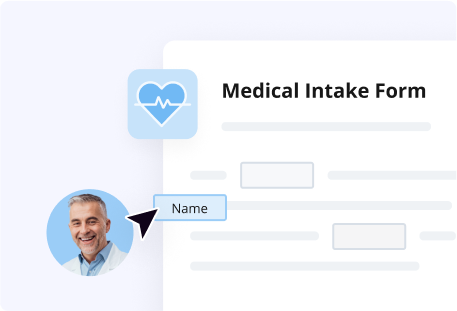Type any topic that interests you
Unlock the ins and outs of automating patient intake checklist flow chart for internal medicine with certification

About the training program
After finishing this course, you’ll be able to take your practice to the next level by reducing your time and effort spent on time-wasting manual data collection, enhancing the experiences of your patients, and reducing risks of data breaches and non-compliance with HIPAA regulations.
What’s included in the certification:
- Comprehensive classes covering the crucial aspects of building a Flow for internal medicine an enhanced patient intake operation.
- A useful quiz that lets you refresh and solidify your knowledge on patient intake checklist Unlock the ins and outs of automating patient intake checklist flow chart for internal medicine with certification automation.
- A badge certifying your new skills and proficiency in patient intake automation.
What will you get?
- How to make patient intake checklist Unlock the ins and outs of automating patient intake checklist flow chart for internal medicine with certification Flow with dynamic fillable form(s).
- How to configure a conditional order of steps in your flow for internal medicine.
- How to automate data routing between external software and systems and your form.
- How to get insights from patient intake flows with airSlate certification.
Who can take advantage of this certification?
- Healthcare employees offering internal medicine treatment and gathering data with patient intake checklist Unlock the ins and outs of automating patient intake checklist flow chart for internal medicine with certification from patients.
- Healthcare office admins, such as Front Desk Supervisors, ensuring smooth office activities.
- IT professionals operating in the medical industry.
More courses you might like
What our students say
Start learning today
Sign now for free
Questions & answers
You can use various tools and resources to create your patient intake checklist flow chart, such as online templates, medical care software, and document creation applications. This normally involves determining important information that needs to be collected from a patient, designing a form, and testing it to ensure it is user-friendly and easy to complete. A wide variety of certification options online will help you improve this process and make it as efficient as possible.
Creating an account with airSlate isn’t required to sign up for the certification on patient intake checklist flow chart Flow for internal medicine. However, you can create an account and put your knowledge into practice as you progress through the course. In any case, our program offers detailed instructions on creating digital forms and automating workflows utilizing airSlate, making it accessible to all students, regardless of their prior experience with our platform.
The purpose of patient intake checklist flow chart is to collect and deal with essential information, generally at the initial point of interaction with a patient. This data usually includes demographic data, medical history, insurance information, and other details that can help healthcare workers make certain that the patients obtain outstanding care. By collecting these details, healthcare companies can streamline the care process and make sure patients receive the best possible treatment.
Mishandling patient data during registration can cause poor customer experience, inaccurate information entry, and, most importantly, legal issues for healthcare providers. airSlate complies with HIPAA standards aimed at protecting patient records at all stages of interaction. Automation of patient intake checklist flow chart workflow for internal medicine with airSlate can help dodge these problems by digitizing patient intake operations, automating routine tasks, and maximizing document safety by keeping patient data electronically.
Typical bottlenecks of the patient intake checklist process are manual information entry in flow chart, long wait times, and the risks of losing or misplacing patient documents. Automation will let handle these issues by digitizing patient intake processes, automating routine tasks such as submitting personal information and medical history forms for internal medicine care, and storing patient records electronically, which can enhance accuracy, decrease waiting periods, and improve document encryption.
The patient intake checklist is a essential component of patient registration. It permits healthcare providers to request essential patient data by means of flow chart, like personal and contact details, health history, appointment organizing, and insurance data. Patient registration considerably affects your clients’ general experience by establishing a favorable first impression, reducing waiting times, and offering medical personnel with exact data for treatment and insurance claims.











